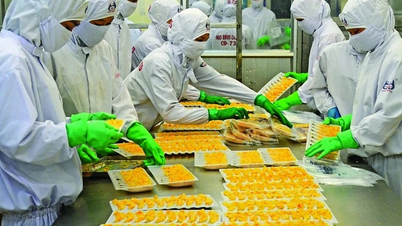
Euronews reported that researchers have just found a method to make cancer cells self-destruct due to pressure.
And their research has yielded promising results for glioblastoma, one of the most common and dangerous brain tumours in adults, which is estimated to affect around 19,000 people a year in the European Union (EU).
Treatment for glioblastoma has not changed much since the early 2000s, including chemotherapy, radiation therapy, and surgery. The average survival time for a patient diagnosed with the disease is 15 months.
“Cancer cells are cells under pressure,” said Eric Chevet, head of the cancer research laboratory at the French National Institute of Health and Wellness. “They are not normal. They use stress response mechanisms to gain an advantage.”
They have the advantage of being more resistant, stronger and more mobile, so they are better able to withstand additional stresses like chemotherapy, he says.
In the case of glioblastoma, cells use a protein called IRE1 as part of their stress response mechanism, making them more resistant to cancer drugs. This stage is called “target acquisition.”
French and Swedish researchers have been investigating whether manipulating this process could weaken cancer cells. And they have just published promising results in the journal iScience.
They proceeded in three steps. First, the Swedish team worked with computational models. They screened about 15 million molecules, running simulations to predict how they would react with proteins in the body. Z4P was identified as a molecule that might be useful.
The second step is cell experiments to test the molecule's effects on cancer cells.
They found that the Z4P molecule not only makes cancer cells less resistant, but also blocks their ability to migrate — one of the tendencies that makes glioblastoma so dangerous.
Finally, the researchers tested their findings in living organisms. They used the molecule to target cancer cells in mice in combination with the drug temozolomide (TMZ), a chemotherapy commonly used to treat glioblastoma.
They found that the combination treatment weakened the cancer cells' ability to withstand pressure, while significantly shrinking the size of the tumors. And the role of the Z4P molecule was clear.
When TMZ alone was used, the tumors returned after a period of 100 to 150 days. But with the combination of TMZ and the Z4P molecule, all the cancer cells disappeared and the mice were cancer-free after 200 days.
Despite the promising results, scientists still need to do more in-depth research to create a new treatment.
In the most optimistic scenario, patients may have to wait another 15 years for this treatment, Chevet noted. The Z4P molecule needs further modification to make it more effective against cancer cells, as well as testing in more animals before clinical trials on humans.
Source link



![[Photo] Prime Minister Pham Minh Chinh chairs conference on anti-smuggling, trade fraud, and counterfeit goods](https://vphoto.vietnam.vn/thumb/1200x675/vietnam/resource/IMAGE/2025/5/14/6cd67667e99e4248b7d4f587fd21e37c)































































































Comment (0)